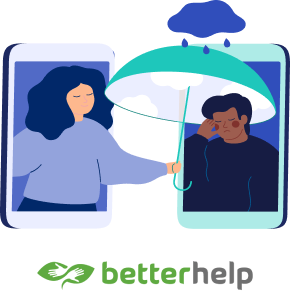Women
Women’s health involves a variety of gender-specific issues, like estrogen production, mental health, sexual health and fertility concerns. Women go through dramatic mental and physical changes as their reproductive systems go through major changes. Women can take charge of their health by eating a proper diet, seeking the proper screenings and maintaining a healthy lifestyle.

Facts About Women’s Health
Women’s bodies go through major changes throughout their lives, leading to differences in health concerns for varying age groups. During times of physiological change, women are more susceptible to mental health issues like depression, anxiety and eating disorders. In adulthood, sexual health issues like fertility, avoiding STDs and practicing safe birth control gain importance. After menopause, some women experience health conditions caused by changes in hormone levels. Fortunately, most of the diseases that affect women are treatable if detected early, and women can live long and happy lives by following simple health tips.
Quick Facts About Women’s Health
- Major risks to women’s health include cardiovascular disease, cancer, osteoporosis and depression.
- Women are more likely than men to be diagnosed with stress and depression.
- STDs, reproductive issues and birth control methods affect women’s sexual health.
- Osteoarthritis, the leading cause of disability in the U.S., affects more women than men.
- Women are more than twice as likely as men to have a UTI.

How Women Age
The reproductive cycle greatly affects many stages of a woman’s life. Estrogen levels directly affect many of the physical changes women experience during adolescence, adulthood and old age.
At the moment of conception, girls immediately begin displaying physiological differences from boys. They express genes in the placenta differently, improving placenta development and pregnancy maintenance. Girls begin developing breasts while they are still in the womb, and they are born with the milk-duct system already in place.
During childhood and adolescence, girls begin to develop identities through repeated interactions, conflicts and disappointments. As young as age six, girls begin developing concerns about their weight. Around the age of eight, the ovaries begin to produce estrogen causing the breasts and areolas to enlarge and buds to appear around the nipple. They also begin to grow pubic hair and hair under their arms.
Life after Menopause
Menopause begins in the late 40s and early 50s in most women. It officially begins when a woman goes a full year without menstruating. During this time, estrogen and progesterone levels fluctuate. As estrogen levels decrease, many tissues in the body – including the breasts – lose hydration and elasticity.
Around this time of life, children often leave home, elderly parents begin needing care and marriages are often affected by a partner’s medical issues or changing life goals. All of these factors lead to a high rate of depression and physical fatigue in many women.
As life expectancy increased, the number of postmenopausal diseases has also increased. Many women are affected by physical conditions like urinary incontinence, chronic migraines and breast cancer. Osteoporosis, hypercholesterolemia (high cholesterol) and atherosclerosis (plaque buildup in arteries) also begin affecting many women after menopause.
In their elderly years, many women experience the loss of friends and family members. Their physical strength and memory weaken, and many women end up living in solitude in their remaining years, which contributes to mental health issues. The risk of cardiac and cerebral vascular diseases also increases at old age.
Advertisement
Professional Therapy, Done Online
A licensed therapist with BetterHelp can provide professional support and guidance, on your schedule. Sign up and get matched in as little as 48 hours.
Get Started
Common Diseases and Conditions
Women are affected by many of the same conditions and diseases as men, but the diseases affect them differently and at different times. There are also many gender-specific diseases that only affect women.
High blood pressure causes a variety of health problems. Women usually have a lower risk for high blood pressure than men until age 45, the sexes have about the same risk from 45-65, and women have a higher risk for high blood pressure after 65. Additionally, many women with normal blood pressure develop high blood pressure after menopause.
Throughout their entire lives, women are at a higher risk for metabolic syndrome. Metabolic syndrome causes high blood pressure, high glucose levels, abnormal lipid levels and increased waist size. Women with metabolic syndrome have a higher risk for heart attack and stroke.
The autoimmune disease Lupus also affects more women than men. Those with lupus die more often from cancer and infections than otherwise healthy people.
Women are also more likely to experience a urinary tract infection, or UTI, especially women older than 60. UTIs cause frequent urination and a burning feeling during urination. If untreated, it can spread to the kidneys, causing sepsis. Sepsis is the body’s response to infection which sometimes causes death.
Cardiovascular Disease
The top killer of women, cardiovascular disease, is responsible for one-third of all female deaths every year. Women often overlook it because experts once thought it was a “man’s disease.” The results of cardiovascular disease include heart attacks, heart valve problems, strokes and arrhythmias (abnormal beating of the heart).
Heart disease is a type of cardiovascular disease. Women are more likely to experience heart disease 10 years later in life than men, and about 42 percent of women who have a heart attack die within a year. Comparatively, only 24 percent of men die within a year of a heart attack. Heart disease accounts for about 25 percent of all female deaths. An estimated 64 percent of women who die suddenly from heart disease never reported feeling symptoms.
Cancer
Cancer kills more than a quarter of a million women every year in the U.S. The types of cancers that affect the most women include skin cancer, breast cancer, lung cancer and colorectal cancer.
Breast cancer affects about 12 percent of American women, but the survival rate is high if it’s detected early. It is the second-highest cause of cancerous death among women, accounting for about 40,000 female deaths per year.
Lung cancer is the leading cause of cancerous death among women in the U.S., accounting for about 70,000 deaths every year. It passed breast cancer as the leading cause of cancerous death in women in 1987. It is almost always caused by smoking cigarettes.
- Cervical cancer
- HPV causes almost every kind of cervical cancer in women.
- Anal cancer
- HPV causes about 95 percent of anal cancers in women.
- Oropharyngeal cancers (cancers of the throat)
- HPV causes about 70 percent of all throat cancers in women.
However, vaccines can often prevent the contraction of HPV.
Osteoporosis
Millions of people have osteoporosis, a disease that causes bones to weaken. It affects older women the most, causing their bones to break more easily. The hip, spine and wrist are most susceptible to fractures or breaks in those with osteoporosis.
- The elderly
- Smaller, thinner women
- Asian and white women
- Those with a family history of osteoporosis
- Those with anorexia nervosa
- Those with low calcium and vitamin D diets
- People who consume excess alcohol
- People who smoke
Depression
More women than men experience depression. It affects a woman’s ability to work, sleep, eat and feel happiness, leading more women to attempt to commit suicide every year than men.
Factors that contribute to depression include genes, hormones and stress. When women’s hormones change, their brain chemistry also changes. Many women experience depression during puberty, after having a baby and during or after menopause.
Women who feel sadness lasting more than two weeks should talk to a doctor or therapist. Therapy can often treat depression, and in some cases, medications may help as well. However, many antidepressants carry serious side effects, and the benefits should be weighed against the risks.

Eating Disorders
Millions of men and women are affected by eating disorders, but women make up the vast majority of those diagnosed. Females make up an estimated 85 percent of the total number of people with anorexia nervosa or bulimia nervosa.
Eating disorders are mental and physical illnesses. Culture, family history, stress and genes contribute to the likelihood of developing an eating disorder.
Anorexia Nervosa
People with anorexia have a fear of gaining weight. They rigorously limit the amount of food they eat. Anorexics often starve themselves to ease feelings of anxiety, anger and tension. They often feel they are overweight even if they have a lower than normal body weight.
Bulimia Nervosa
People with bulimia also fear gaining weight. However, they often eat in binges before attempting to purge their body of food by throwing up or taking laxatives. Bulimics often feel they can’t control their food intake. Unlike anorexics, they may have a normal body weight.
- Mental health problems
- feeling sad, moody or irritable, memory problems and increased chance of fainting
- Heart problems
- lower blood pressure and slowing heart rate
- Blood problems
- anemia (lack of blood cells that carry oxygen)
- Kidney problems
- increased risk of kidney stones and kidney failure
- Intestine problems
- constipation, bloating
- Hormonal problems
- discontinuing menstruation, trouble getting pregnant, higher risk of miscarriage if pregnant and postpartum depression
- Skin problems
- bruising easily and drying or yellowing skin
- Hair problems
- thinning
- Additional problems
- weakened muscles, swollen joints, bone loss and fractures

Sexual Health and Fertility
Sexual health refers to a state of well-being in which a woman can completely participate and enjoy sexual activity.
Physical, psychological, social and interpersonal factors affect sexual health. Sexual organs, hormone-producing glands, the brain and the rest of the body make sex possible. But mental factors like experiences, expectations and emotions also contribute to sexual health.
Sexually Transmitted Diseases
Sexually transmitted diseases, or STDs, are one of the top concerns in women’s sexual health. Common STDs include HPV, HIV, syphilis, chlamydia, gonorrhea and genital herpes. Women can avoid many STDs by using latex condoms, knowing a partner’s history and receiving vaccinations.
Some people with STDs feel healthy and do not realize they have are infected, causing concern for women thinking about getting pregnant. Pregnant women can pass STDs to their unborn baby.
There are many treatments available for women who test positive for an STD. Doctors can often cure gonorrhea or chlamydia if detected early. HIV treatment can help women live longer, healthier lives.
Endometriosis
Endometriosis occurs when the endometrium — tissue normally found inside the uterus — grows in other parts of the body. It can grow in the ovaries, outer surface of the uterus, fallopian tubes and bladder, causing severe pain.
The endometrium thickens, breaks down and bleeds during the menstrual cycle. Women suffering from endometriosis have painful periods, lower back pain, pain during sex and digestive problems. Half of women with the condition experience trouble getting pregnant.
Doctors usually treat endometriosis with pain relievers, anti-inflammatory drugs, fertility treatments, surgery or hormonal drugs like birth control.

Birth Control
Almost every woman practices birth control at some point in life. More than 98 percent of women in the U.S. have used birth control, and an estimated 62 percent use it regularly.
For most women, the primary purpose of birth control is to prevent pregnancy. However, some women use it to prevent the spread of STDs or to regulate hormones. Women should strongly consider all available birth control options and determine which is best for them.
Popular birth control methods include hormonal methods, intrauterine devices (IUDs) and other barrier methods. Women should always consult a doctor to determine the best type of birth control for them.
- When they want to have children, if at all
- Their overall health status
- How often they have sex
- How many sexual partners they have
- What their risk of obtaining STDs is
- What the effectiveness of the method is
- What side effects the method has
- The likelihood that they can properly use the method
Cost and accessibility are additional considerations for many women. Newer services allow women to get prescribed and buy birth control online.
Hormonal Methods
The most widely known hormonal birth control method is the daily pill. Other hormonal methods include, patches, rings, shots hormonal IUDs and implants. Each method is different.
Women must take pills every day, but hormonal IUDs can last up to five years. The “morning-after pill” can be taken in emergency situations, like if a condom breaks or if a woman forgets to take her daily pill. Unlike other hormonal methods, the “morning-after pill” does not require a prescription.
All methods have side effects. Yaz and Yasmin birth control pills can cause extreme side effects like upper respiratory infections, itching, hives, high cholesterol, gall bladder disease, blood clots, heart attack and stroke.
The hormonal device NuvaRing can increase a woman’s risk of heart attack, stroke and blood clots.
Advertisement
Real Therapy, Done Online
BetterHelp offers flexible scheduling so you can make time for therapy in between meetings, classes, child care, and more. Get 20% off your first month.
Get Started
Permanent Birth Control
Women may elect to undergo a permanent form of birth control, also referred to as female sterilization, if they do not wish to ever become pregnant. Female sterilization methods include tubal ligation (tube tying) and Essure birth control. The procedures are not reversible. As of December 31, 2019, Essure is no longer available in the United States. The decision to withdraw this product from the market was voluntary, and not based on concerns about the safety or effectiveness of the device.
Tubal ligation, or tying the tubes, requires surgery in which the fallopian tubes are closed. The procedure lasts about 30 minutes and usually requires anesthesia. During the operation, a surgeon will either block the tubes, burn them or clamp them shut. The procedure prevents pregnancy almost 100 percent of the time.
The Essure Permanent Birth Control System is no longer available in the US, but involved inserting two coils made of nickel titanium, stainless steel and polyethylene fibers in the fallopian tubes. The procedure took about 10 minutes and did not require anesthesia. The coils expand inside the tubes, causing scar tissue to build around the coils. Bayer advertised the system as 99.83 percent effective.
Essure birth control was not without risk, and thousands of women claim the coils perforated their fallopian tubes, causing severe pain, infections and long-term injuries. Some cases even reported the deaths of women and fetuses.
Intrauterine devices (IUDs)
IUDs are small, T-shaped devices made of plastic and either copper or hormones. Doctors or nurses put the device inside the uterus. They are one of the most effective forms of contraception, and they cannot be felt during sex if installed properly.
Hormonal IUDs release small amounts of hormones for up to five years to prevent pregnancy. Copper IUDs release a small amount of copper to prevent fertilization for up to 10 years. In emergency situations, copper IUDs can be used to prevent pregnancy.
IUDs also carry side effects. The Mirena IUD can migrate and perforate the uterus, enter the abdominal cavity, pelvis, bladder and blood vessels, and cause septic abortion, ectopic pregnancy and inflammatory disease.
Natural Family Planning (NFP)
Women use Natural Family Planning (NFP) when they do not want to get pregnant but other birth control methods are not an option. It is not as effective at preventing pregnancy as other forms of birth control, and women must have regular periods to use it.
In NFP, women learn when they are most likely to get pregnant and avoid having sex on those days. Women trying to get pregnant can increase their chance of pregnancy by having sex on days in which they are more likely to conceive.
Barrier Methods
Barrier methods block sperm from reaching the egg. The most popular method is the male condom, worn over the penis during sex. Other methods include the female condom and the cervical cap. Male condoms are effective at preventing the transmission of HIV and some other STDs.

Health Tips
Many conditions and diseases that affect women can be treated or prevented. Eating a healthy diet can reduce a woman’s risk of heart disease, Type 2 diabetes, high blood pressure, some types of cancer and osteoporosis.
Recommended Screenings for Women:
- Ages 40-49 should ask their doctors about mammograms (breast cancer screenings).
- Ages 50-74 should receive a mammogram every two years.
- Ages 21-65 should receive a pap smear every three years.
- Ages 30-65 should receive an HPV test every five years.
- Ages 50-75 should be regularly screened for colorectal cancer.
- Younger than 65 should be screened for HIV.
- Born between 1945 and 1965 should be screened for Hepatitis C.
- All women should be screened for diabetes if they have high blood pressure.
- Lung Cancer: begin screening if they have a history of smoking tobacco.
- Osteoporosis: begin screening at age 65.
- STDs: screen if they are planning to get pregnant.
- Depression: talk to their doctor or therapist if they feel sad, hopeless or little pleasure doing things for more than two weeks.
Health Tips for Women:
- Be physically active: this includes walking, gardening and dancing. Try to do 30 minutes of moderate physical activity during most days of the week.
- Eat a healthy diet: eat a diet balanced in vegetables, fruit, lean meats, whole grains, low-fat dairy products and avoid foods high in cholesterol, trans fats, saturated fats, salt (sodium) and added sugars.
- Stay hydrated: drinking plenty of fluids and emptying the bladder helps prevent UTIs.
- Maintain a healthy weight: Balance calories consumed with calories burned.
- Drink alcohol in moderation: Most women should not drink more than one drink per day.
- Don’t smoke.
- Take steps to avoid STDs: Get tested, know your partner’s history, use latex condoms and get vaccinated for hepatitis A and B and HPV.
- Engage in mentally-stimulating activities: Intellectual activities help protect women older than 60 from some mental health diseases.
- Ask your doctor about taking aspirin. Aspirin may help prevent a stroke for some women between the ages of 55 and 70.
- Ask your doctor about taking folic acid supplements if you plan to get pregnant.
- Ask your doctor about calcium and vitamin D supplements to help prevent osteoporosis.

Drugs & Devices with Potential Risks in Women
There are several drugs and medical devices that could pose a number of health risks to women. In addition, talcum powder is linked to an increased risk of ovarian cancer.
- Accutane
- Accutane treats acne, but it can cause birth defects like cleft palate, missing ears, facial dysmorphism and central nervous system malformations.
- Addyi
- Addyi treats hypoactive sexual desire disorder, but it may cause nausea, sleepiness, fainting and low blood pressure.
- Allergan Breast Implants
- Allergan Biocell textured breast implants have been linked to an increased risk of a type of cancer called breast implant-associated anaplastic large cell lymphoma, or BIA-ALCL.
- Diflucan
- Diflucan treats fungal and yeast infections, but it can cause birth defects like broad head, abnormal face or skullcap, cleft palate, bowing of thigh bones and thin ribs or long bones.
- Elmiron
- Elmiron is the only approved oral drug to treat pain and discomfort of interstitial cystitis, a bladder condition that affects more women than men. The drug has been linked to pigmentary maculopathy, a condition that may lead to vision loss and blindness.
- Fosamax
- Fosamax treats osteoporosis in postmenopausal women, but it can cause osteonecrosis of the jaw resulting in death, joint and muscle pain, irregular heartbeat, inflammations and ulcers in the esophagus.
- Follistim
- Follistim is a fertility treatment, but it can cause ovarian hyperstimulation syndrome, which causes fluid buildup that can lead to blood clots and death.
- Hip Implants
- Hip implants have a 29 percent higher failure rate in women than men. Failure can result in the release of toxic ions, fractures, dislocation, necrosis and revision surgeries.
- Lipitor
- Lipitor treats high cholesterol, but it can cause Type 2 diabetes in women.
- Tamoxifen
- Tamoxifen is a hormone therapy for breast cancer, but it can cause blood clots, stroke and increased risk for contralateral (opposite) breast cancer, endometrial cancer and uterine cancer.
- Qsymia
- The weight loss drug Qsymia can cause birth defects, increased risk of suicidal thoughts, eye problems and difficulty concentrating.
- Power Morcellators
- Power morcellators are surgical tools used during hysterectomies or to remove uterine fibroids, but they can cause the spread of cancerous tumors.
- Talcum Powder
- Some studies have linked genital use of talcum powder to an increased risk of ovarian cancer.
- Transvaginal Mesh
- Transvaginal mesh is an implant used to treat pelvic organ prolapse and stress urinary incontinence, but it can erode or perforate organs, causing pain, nerve damage, infection, bleeding, scarring and neuro-muscular problems.
Reminder:
Changes in the reproductive cycle cause dramatic changes in the lives of women, making them susceptible to gender-specific diseases and conditions. Women can take charge of their healthcare by being aware of the changes their bodies are going through and understanding their risks for diseases or conditions. With a healthy diet, exercise and proper screenings, women can live happily into old age.
Advertisement
Professional Therapy, Done Online
A licensed therapist with BetterHelp can provide professional support and guidance, on your schedule. Sign up and get matched in as little as 48 hours.
Get Started
Calling this number connects you with a Drugwatch.com representative. We will direct you to one of our trusted legal partners for a free case review.
Drugwatch.com's trusted legal partners support the organization's mission to keep people safe from dangerous drugs and medical devices. For more information, visit our partners page.





